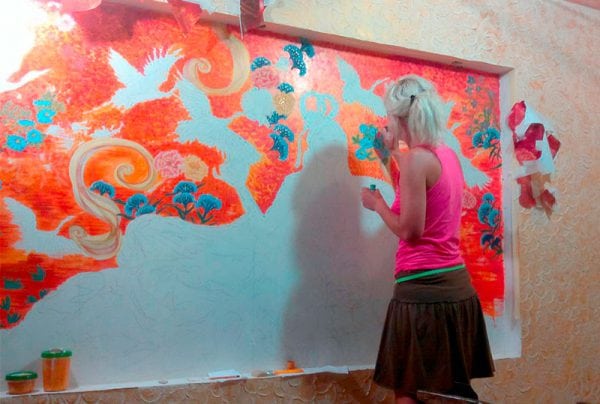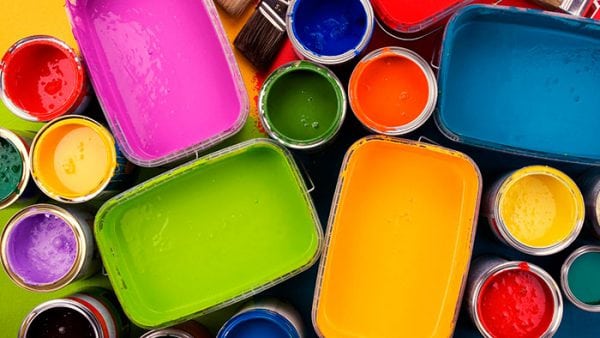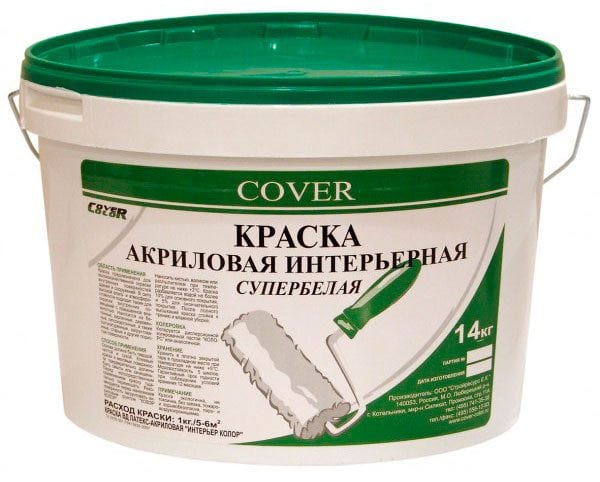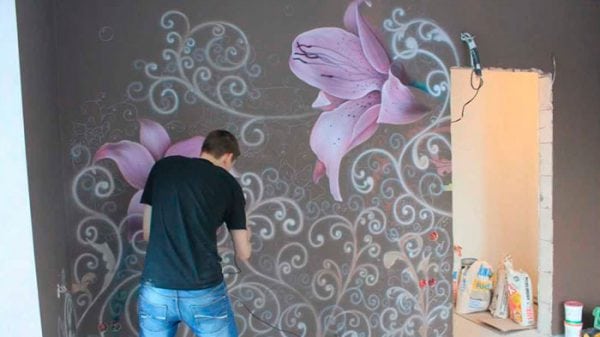Paints for wall painting are hundreds of colors and shades, thousands of textures and millions of variations of the decor of the interior decoration. Often, to give a special look to an apartment, a country house or a cottage, colossal cash injections are not required. It is enough to show imagination and not be afraid of creative creativity! For example, one of the excellent decor options will be painting with acrylic paints on the previously prepared surface of walls, ceilings, doors and even windows.
- The main production stages
- Paint selection
- Acrylic paint is a great choice in every way.
- Proper use of paint for painting
- To summarize


In order to create a unique image, you need some painting tools, a selection of pre-prepared templates for drawing and, of course, paint. In order to decide on wall painting, choose the right decor elements and set the desired style, you need to familiarize yourself with some classic rules and techniques that will help make this process as quick and enjoyable as the master who decided to transform his house.
to contents ↑The main production stages
And so, first of all, you need to decide on such aspects:
- where the painting will be located, where it will be most appropriate to look;
- the master must clearly set a goal to highlight or emphasize a particular spatial zone (for example, masking with the help of a given artistic technique of a building defect or vice versa - drawing attention to a striking architectural technique may be a good option);
- requisition of the source image from which the painting will be made;
- preparation of consumables, in particular the choice of paint and brushes;
- background organization.
It is important to consider these points, since the correctness of their implementation will affect the final result, which will be very difficult to change in the future.
to contents ↑Paint selection
We will not get to know the first production stages in detail, since here everything depends on the individual wishes of the customer (and you can, in the end, watch the video master classes in which this problem is very clearly revealed). But on the question of selecting paint, it is worthwhile to dwell in more detail.
And so, the most critical stage of work is the selection of appropriate materials. On how not only beautiful, but also high-quality paints will largely depend on the further operation of the facility.
The most popular paints that can be used for woodwork, stone, etc.:
- Acrylic
- Oil.
- Latex.
- Water emulsion.
The advantages, features of use and price of these materials are very diverse. Depending on what surface will be processed, how long it takes to dry the paint, and also what texture is planned to get in the end, you can choose the most optimal option.
Acrylic paints are the most popular, and this is not surprising, because they are easy to use, do not require long-term drying, do not spread out during operation and are perfectly connected to each other, forming wonderful transitions in tone. They are moisture resistant and are not afraid of wet cleaning in the house and damp weather. Suitable for woodwork.Ideal for using spot technology. Wash off with water solvents.
Oily - cheap and effective. Variations of color palettes are all kinds. One drawback is that they dry for a long time and at the same time emit an unpleasant odor. Not afraid of damp weather.
Latex - an excellent type of paint that can be safely applied directly to the wallpaper. After drying, they form a thin film that protects the surface of the picture from erasure and moisture.
Water-based - these paints are rightly called the safest and textured. They are easy to apply and do not require extra care. The only drawback is that they are applied only to pre-painted walls with glossy paint.

What colors of the above are best used in a living room? Acrylic and water-based emulsions are ideal, as for latex and oil, their use is possible only at the repair stage or in the case when it is possible to allow the material to dry completely after completion (the smell released during the drying process can be toxic to the body, especially dangerous if the house has children and pets).
to contents ↑Acrylic paint is a great choice in every way.
Today, acrylic paints are the most popular, and this is not surprising. They are used for woodwork, stone, plaster and other surfaces. Equally good to use them in rooms with high humidity.
The advantages of the choice include:
- excellent thick texture that does not require the addition of water and therefore dries extremely quickly;
- do not fade under the hour of sun exposure;
- resistant to chemicals;
- the most vivid picture that does not fade even with time;
- environmentally friendly product;
- after painting, the drawing is very easy to correct.
The main thing that you should remember is that acrylic paints are convenient and easy to use. They are easy to combine, with their help you can easily create an amazing picture both on wood and on a plastered wall. They behave perfectly in a damp room (for example, a bathtub), they are perfectly washed off with water solvents.
Acrylic paints need special brushes, with the help of which the process of creating a special image will be carried out. You need to take brushes of different numbers, since for painting the walls it will just be necessary to use several lines in size and thickness at once.

Proper use of paint for painting
Most often, painting is done on plaster and wood, less often - metal, stone, plastic. In each case, you need to know the secrets of successful application of the material to create the perfect result.
For example, for wood acrylic painting you need to prepare the surface in advance, remove the old layer of paint, varnish or any other decorative coating. Then prime the surface and prepare for work. A thoughtful pattern can be applied to a clean plane, fixing it with a transparent varnish or a special transparent emulsion on wood.
To decorate the plaster, degrease the surface and wipe it with a dry sponge. In the presence of irregularities - smooth the layer of plaster with putty and then prime. Subsequently, again dry and paint the final surface, which came out in gray, with white enamel. Then you can proceed to the next stage - the direct decoration of the room.
Remember that all objects close to the work surface must be covered.
Work on the design of the doors can be carried out by various techniques, in particular using point technique.The smoother transition of gold painting from walls to doors will look as spectacular as possible, creating a single ensemble that does not require additional stylistic design.
to contents ↑To summarize
Beautiful rooms - today this is not luxury, but the norm! Standing out from the crowd, attracting with its originality and not being afraid to challenge the gray mass is the lot of leaders, which is why many modern people in residential buildings and offices prefer to decorate their plastered walls with bright color schemes.

There are many techniques for working on wood and plaster, there are many master classes to help you figure out which techniques to choose and how to use your acrylic paints to realize your wildest creative fantasies. Fiction is a method of self-realization, and it doesn’t matter what you choose: a golden door pattern or multi-colored, rainbow rain in the central part of the house ... In any case, it will turn out bright, outstanding and very modern!



